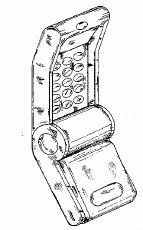According to Pedro de Paranaguá Moniz, Cory Doctorow, Pedro A. D. de Rezende's petition to WIPO entitled "
i) development remains a challenge, and a significant “knowledge gap� as well as a “digital divide� continue to separate the wealthy nations from the poor;
ii) the protection of intellectual property rights (IPRs) is not an end in and of itself; rather IPRs are tactical instruments used to bridge the knowledge gap and the digital divide;
iii) equally, harmonisation efforts on IPRs must be subservient to the different development needs in Member states; these nations being able to afford the flexibility they need to serve their national ends;
iv) the protection of IPRs shall never come at the expense of the legitimate interests of the public, and the cost of IP regimes shall always be weighed against the public benefit;
v) the WTO's Doha Declaration on the TRIPs Agreement and Public Health is an important milestone, as it recognises TRIPs as an international instrument for supporting public health objectives in Member states, not as an instrument for merely expanding IPRs;
vi) as a member of the U.N., WIPO must comply with and be guided by the broad development goals of the U.N.;
vii) despite WIPO already being mandated to take into account the U.N. system, the WIPO Convention (1967) shall be amended to ensure that the “development dimension� is inequivocally taken into account;
viii) WIPO treaties are generally extending existing obligations under the WTO's TRIPs Agreement, which unduly increases the burden put on developing and least developed countries, thus WIPO instruments should not expand upon TRIPs obligations;
ix) the WTO's TRIPs Agreement includes two articles – 7 and 8 – that set out objectives and principles for international instruments on knowledge goods. They call on these instruments to promote technological innovation, transfer and dissemination of technology, to the mutual advantage of producers and users so as to conduct to social and economic welfare, and to the balance of rights and obligations; adoption of measures necessary to protect public health and nutrition, and to promote the public interest in sectors of vital importance to socio-economic and technological development, and to prevent the abuse of IP rights by right holders or the resort of practices which unreasonably restrain trade or adversely affect the international transfer of technology. Language drawn from these clauses should appear in all future WIPO instruments;
x) higher standards of IP protection have failed to foster the transfer of technology through foreign direct investment and licensing;
xi) besides including clear provisions on transfer of technology in treaties under negotiation in WIPO, a new subsidiary body within WIPO (Standing Committee on IP and the Transfer of Technology) shall be established in order to ensure an effective transfer of technology to developing countries, including the creation of an international regime that would promote access by the developing countries to the results of publicly funded research in the developed countries;
xii) creation of a Treaty on Access to Knowledge and Technology;
xiii) accordingly, it is important to bear in mind the relevance of open access models and knowledge sharing for the promotion of innovation and creativity, like free and open source software, as well as to safeguard the exceptions and limitations existing in domestic laws;
xiv) regarding enforcement, there must be a concern not only to take into account right holders, but its obligations as well, in a way that right holders take fair and equitable procedures, not restraining legitimate competition or abusing their rights (articles 8 and 40 of the TRIPs Agreement should be brought into WIPO's framework);
xv) WIPO, as a U.N. specialised agency, shall considerably expand programmes for technical cooperation in IP related matters and qualitatively improve them, as well; bearing in mind the requirements of U.N. operational activities: neutral, impartial and demand-driven;
xvi) all sectors of society should be served, including its participation in all norm-setting activity;
xvii) WIPO, besides being responsible for fostering the active participation of public interest non-governmental organisations, shall take appropriate measures to distinguish between user organisations representing the interests of IP right holders, and NGOs representing the public interest, in a way to prevent confusion and to make things more transparent;
xviii) WIPO shall jointly organise an international seminar with the WTO and UNCTAD on IP and development, with the active and unlimited participation of all relevant stakeholders, including public interest NGOs, civil society and academia; xix) WIPO could stablish a Working Group on the Development Agenda to further discuss the implementation of the Development Agenda and work programmes for WIPO, and
xx) the very credibility of the IP system is undermined if a vision that promotes the absolute benefits of IP protection without acknowledging public policy concerns is taken, thus the development dimension shall be brought into the IP system and WIPO's activities.



















